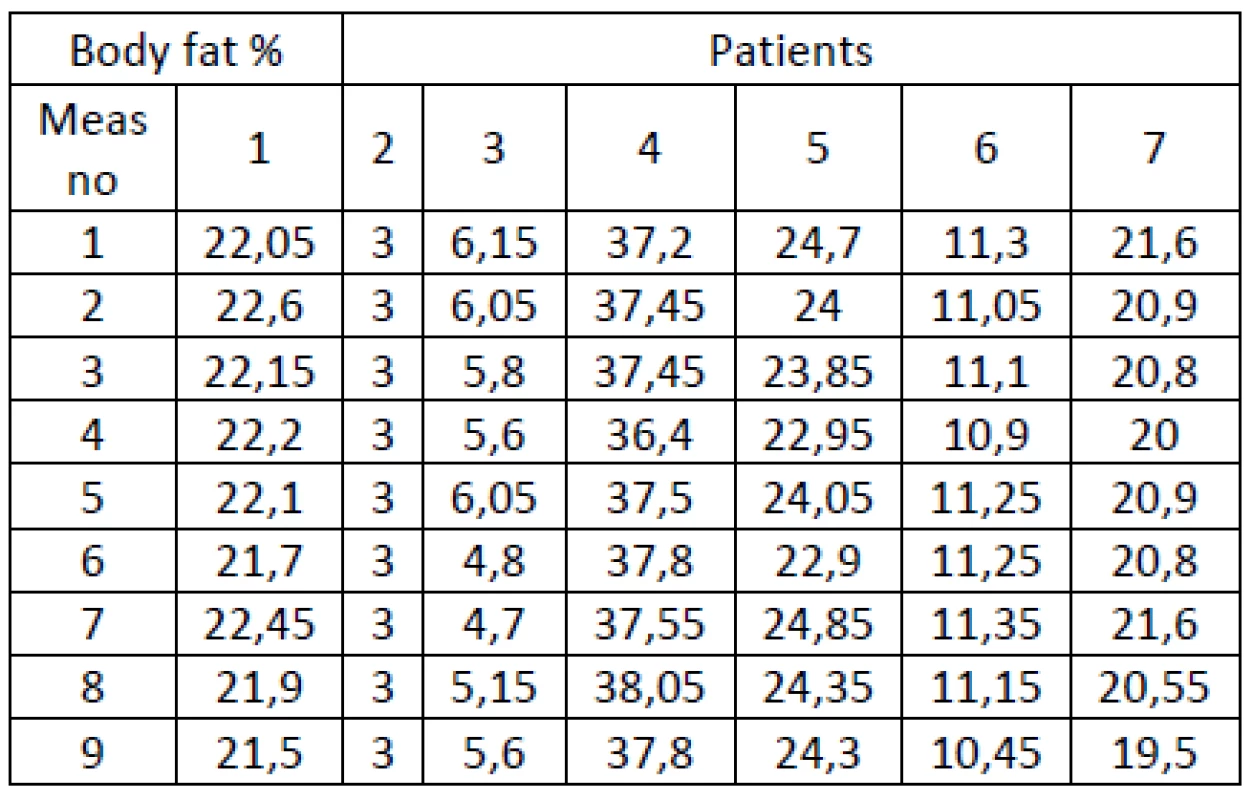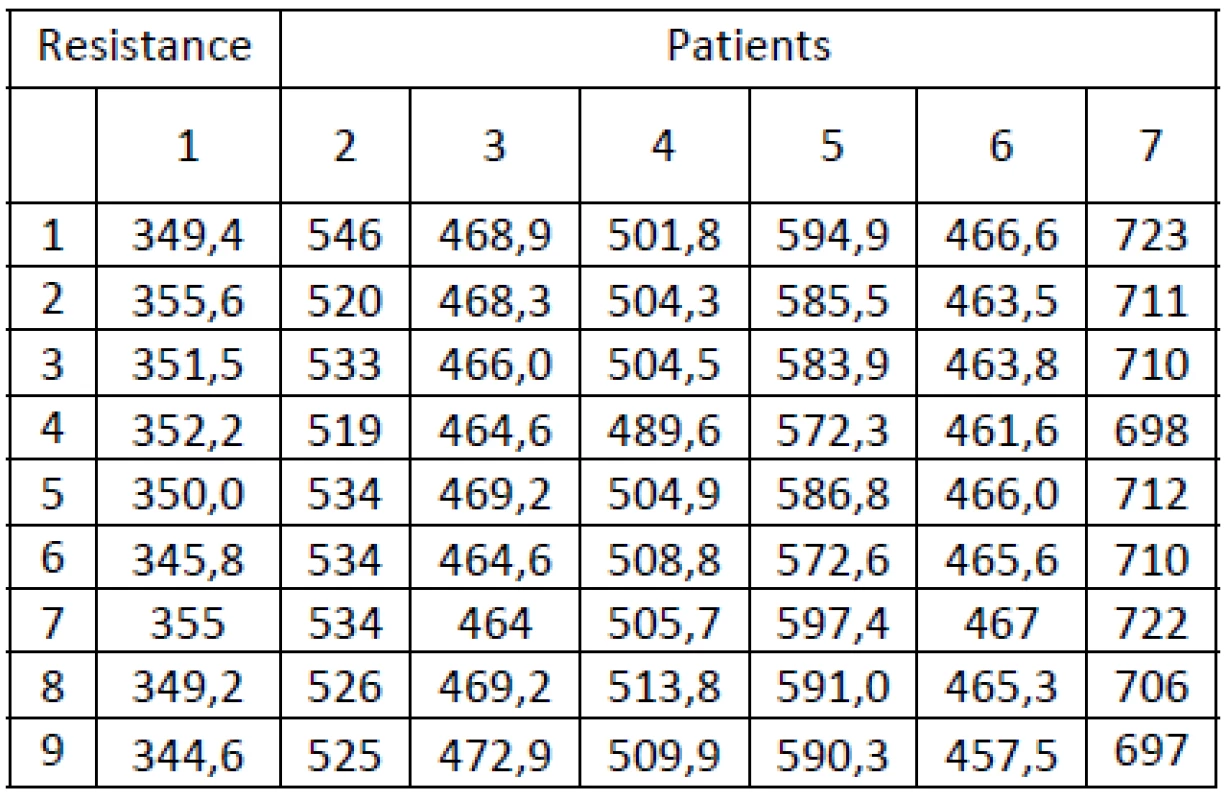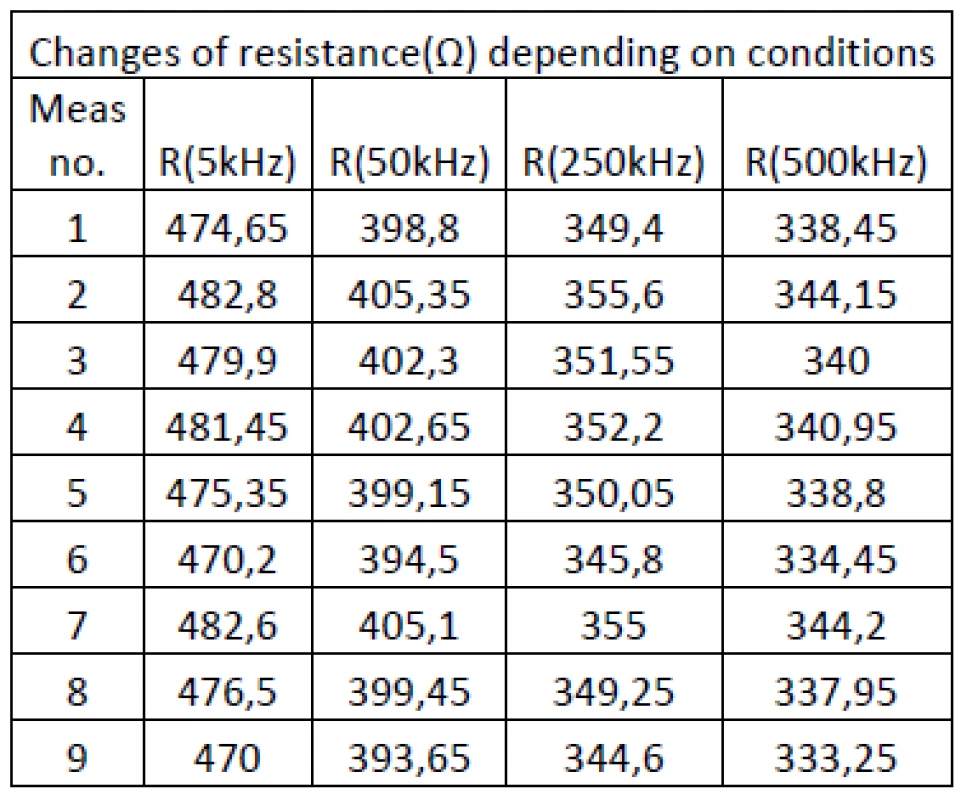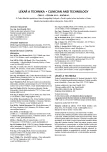CHANGES IN BIOIMPEDANCE DEPENDING ON CONDITIONS
The aim of the paper is to present results of our ongoing research focused on the influence of measurement condition change on body composition measurements. The performed measurements showed certain influence which must be verified by repeated experiments. These changes can lead to important conclusion and further standardization.
Keywords:
Bioimpedance, Body composition, BIA, Body fat
Authors:
J. Hlubik 1; P. Hlubik 2; L. Lhotská 1
Authors place of work:
Gerstner Laboratory, Faculty of Electrical Engineering, Czech Technical University in Prague
Czech Republic
1; Faculty of Military Health Sciences Hradec Králové, University of Defense, Czech Republic
2
Published in the journal:
Lékař a technika - Clinician and Technology No. 2, 2012, 42, 69-72
Category:
Conference YBERC 2012
Summary
The aim of the paper is to present results of our ongoing research focused on the influence of measurement condition change on body composition measurements. The performed measurements showed certain influence which must be verified by repeated experiments. These changes can lead to important conclusion and further standardization.
Keywords:
Bioimpedance, Body composition, BIA, Body fat
Introduction
Nowadays BMI (body mass index) is a parameter that is often used in studies to indicate degree of obesity (or slimness). BMI is a calculated value that uses patient’s height and weight. Thanks to this two persons having the same height and weight can have same BMI but body composition can be diametrically different. Focus only on BMI can lead to biases in classification if no other information is obtained. Hence BMI should be used in big studies as a first approach before further investigation.
It is known that density of bones and quality of muscles influences the weight to a certain degree. That means that two persons having the same height and waist size might have relatively high difference in weight due to the differences in body composition.
Thus, a method allowing measurement of more informative quantities is necessary in order to evaluate the amount of body fat more objectively and precisely. As obesity does not refer to excessive body weight but it refers to the condition in which the individual has an excessive amount of body fat. Many laboratory and field assessment techniques exist for estimating a person's body composition.
The Body Impedance Analysis (BIA) represents one of the methods for classification of body composition.
This method use electrical current that is injected into the body. This current is measured and from these values are calculated parts of body composition such as FFM (fat free mass), TBW (total body water), ICW (intracellular water), ECW (extra cellular water), fat% and so on.
Nowadays devices for impedance measurements are from basic to very complex. Basic machines uses just single frequency measurements and mostly have only one pair of electrodes. Better devices uses for measurements wider range of frequencies and mostly have more electrodes which allow segmental measurements of a body. This feature is important e.g. for measurements of a single body part in case of hydration or other problems.
It is crucial to know which value is needed and due to this choose right device. E.g. for basic examination basic device is enough, but these devices could be often biased. So it is crucial to use proper device.
It is possible to determine patient’s obesity in more than one way. One method of the obesity characterization is Body Mass Index (BMI) > 30kg/m² and by body fat increase. But as discussed earlier the question is if BMI alone is sufficient for obesity classification. Another classification of obesity was determined by WHO as a body fat ranges for standard adults [1].

This obesity classification should be better because it takes into account not just weight and height but also body fat % which is a definition of obesity.
From this perspective method that is able to measure or calculate body fat % should be more precise than just BMI or any other method. For body composition measurement is possible to use several methods and bioimpedance is one of best method.
Many of the studies [2,3,4] performing the BIA for various purposes (e.g. relevance to diagnosing metabolic disorders, cardiovascular risk, assessment of degree of obesity, etc.) usually do not mention patients and electrode status and frequency used during the measurement. Also no information about environmental conditions is given. This led us to formulation of the following two goals of our study.
Goals
The first part of the work deals with a question of measuring human body compositions how and why. The task is to find out what is the role of environmental conditions. The goal is to find out what effects have different hand and feet measuring conditions such as sweat, usage of gels and moistures. It is assumed that changes in measurement conditions may lead to mistakes and biases of values for specific parts of the body.
The second goal is to measure and evaluate body impedance changes and to find out if frequency does have importance on these conditions. And if frequency of 50 kHz is sufficient for measurements of wider range of frequencies should be used.
Methods
Seven subjects of the university in the age group of 25 to 62 years were included in the monitoring in the first task. The height and weight were measured in standard way and the BMI was calculated. BMI mean was 23,05 ± 5,86. All individuals were people having average values of biological parameters. The Tanita MC 180 MA device was used.
Device Tanita MC-180 MA is able to measure on frequencies 5 kHz, 50 kHz, 250 kHz and 500 kHz. It is also possible to do segmental measurements.
All individuals were measured in these conditions: normal conditions, application of water, solution saline, EEG gel, hand cream with oil hand application, oil free hand cream hand application, hand cream with oil hand and foot application, oil free hand cream hand and foot application, oil free hand cream and water based foot cream. For better outcome every measurement was doubled and average values were used.
In the second task, multi-frequency eight-electrode approach of body impedance was considered. BIA was carried out on the following frequencies: 5 kHz, 50 kHz, 250 kHz and 500 kHz.
Results
Results that were measured and observed during changes of conditions are shown in tables one and two. For better understanding also change of body fat % and resistance is shown in Figure 2 and Figure 3.


1) The results of the first set of measurements show that values confirm the hypothesis that the level of body composition can by influenced by measurement conditions. If we consider the first measured values in table 1 is 100% then the values of other measurements
vary between 102.49% and 76.42%.

Although the differences in some cases are not very high it is obvious that conditions can have influence on outcome values. It is also shown that values obtained from persons with low body fat can be biased. Some creams and moistures can dramatically change contact conditions between hand foot and device electrodes.
As shown in Tables 1 and 2 changes in body fat and impedance between measurements differ in range from 4,43% to 21,95% . This shows that knowledge of application of various creams and lotions can be very important.

In Figure 4 changes in total body water (TBW) are shown. These changes correspond to changes of condition as well but in negative correlation. As show in table 3 changes in resistance differ depending on the conditions from these values from these values correlation have been made and best values for correlation have frequency of 250 kHz.


Conclusion
In this study we have proven that changes in measuring condition can change outcome values of measured subject. Differences between some measurements were significant. Resistance was changed every time those conditions were differed.
This leads to importance of exact specification of measurement conditions. Therefore the importance of patient and device status is necessary to know. In some cases the difference between normal status and status with sweat on hands and feet can play significant role in outcome values. It is necessary to know in which state the measurement is performed. Also the composition of sweat can be very important because sweat differs between patients. This is additional information necessary for correct evaluation.
Otherwise the results of such a measurement can be biased.
It is shown that bioimpedance method is suitable for body composition evaluation. Also values of body fat, lean mass, total body water are accessible by this method. This method have better outcome than just BMI and can be easily used in various conditions and patients. This method is fast relatively cheap and has very good outcome values.
In future more measurements should be made to prove importance of measurement conditions in bioimpedance technique. Also further standatization in this field of body composition should be made because no standardization is made nowadays.
Acknowledgement
This research and implementation work has been supported by SGS10/279/OHK3/3T/13 and FRVS 110065.
Jan Hlubik
CTU in Prague department of cybernetics
Faculty of Electrical Engineering
Technicka , Prague
E-mail: hlubikjan@post.cz
tel: +420 22435 5769
Zdroje
[1] Dympna Gallagher, Steven B Heymsfield, Moonseong Heo, Susan A Jebb, Peter R Murgatroyd, and Yoichi Sakamoto Healthy percentage body fat ranges: an approach for developing guidelines based on body mass index1 Am J Clin Nutr 2000;72:694–701
[2] Linda Paniagua, Vitool Lohsoonthorna, Somrat Lertmaharit,Wiroj Jiamjarasrangsi, Michelle A. Williams(2008) Comparison of waist circumference, body mass index, percent body fat and other measure of adiposity in identifying cardiovascular disease risks among Thai adults. Obesity Research & Clinical Practice (2008) 2, 215—223.
[3] Nayeli Macias, Heliodoro Alemán-Mateo, Julián Esparza-Romero and Mauro E Valencia(2007) Body fat measurement by bioelectrical impedance and air displacement plethysmography: a cross-validation study to design. Nutrition Journal 2007, 6:18 doi:10.1186/1475-2891-6-18
[4] Kentaro Shoji, Kazuhisa Maedaa, Tadashi Nakamura, Tohru Funahashi, Yuji Matsuzawa, Iichiro Shimomura(2008) Measurement of visceral fat by abdominal bioelectrical impedance analysis is beneficial in medical checkup. Obesity Research & Clinical Practice (2008) 2, 269—275
Štítky
BiomedicínaČlánek vyšel v časopise
Lékař a technika

2012 Číslo 2
Nejčtenější v tomto čísle
- MECHANICAL MODEL OF THE CARDIOVASCULAR SYSTEM: DETERMINATION OF CARDIAC OUTPUT BY DYE DILUTION
- MATLAB AND ITS USE FOR PROCESSING OF THERMOGRAMS
- The Fifth Biomedical Engineering Conference of Young Biomedical Engineers and Researchers
- VENTILATOR CIRCUIT MODEL FOR OPTIMIZATION OF HIGH-FREQUENCY OSCILLATORY VENTILATION
